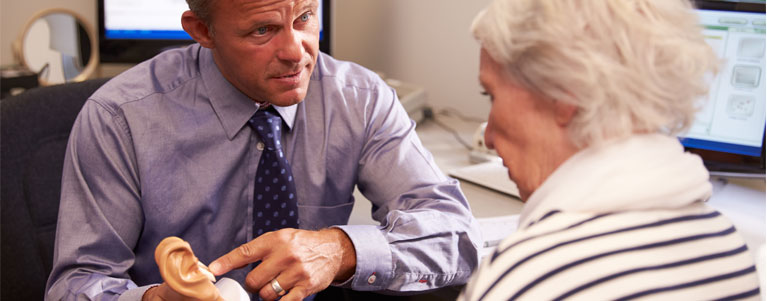WHAT ARE ASSISTIVE LISTENING DEVICES (ALDS)?
Assistive Listening Devices (ALDs) are amplification instruments designed to be helpful in specific, but not all, listening situations. For instance, there are ALDs that amplify the TV, the telephone, that amplify in theaters, in places of worship, and that amplify public speakers. Hearing aids, which also amplify sound, are instruments that can be used in all listening situations. But because a hearing aid is an all-purpose instrument, it may not be as successful in each and every specific application.
How do ALDs differ from hearing aids in Raleigh?
The construction of an ALD is different from a hearing aid in one important aspect: All of the components of a hearing aid– the microphone, the amplifier, and the loudspeaker– are located within the body of the instrument that is placed on or in the user’s ear. Therefore, the microphone of a hearing aid picks up both signal and noise. In contrast, the microphone of an ALD is separated from the body of the instrument and is placed at the sound source so that it picks up the desired signal and reduces the interference of background noise. This is the biggest advantage of ALDs.
How do ALDs transmit from source to receiver?
The transmission method is the key distinguishing factor in various types of ALDs. The transmission method is the technique that is used to send the signal from microphone (transmitter) to receiver.
Schedule an appointment to check your hearing and get fitted for hearing aids in the Raleigh Triangle Area.
FIVE PRIMARY METHODS OF SOUND TRANSMISSION
- Hard Wired – A thin cable from the receiver attaches to the microphone. This type of ALD is useful for one-to-one conversation such as while traveling in a car.
- FM – The sound is transmitted from a microphone worn by the speaker by an FM radio signal. An FM system is often used by children in classrooms for the hearing impaired. FM systems can be used in addition to hearing aids and are especially helpful to reduce background noise levels.
- Infrared – The signal is transmitted by an infrared light signal, similar to the remote control on TVs or VCRs. An infrared system is often used in the home to amplify the TV or in movies, theaters, or public speaking situations. The infrared system requires a clear line-of-sight from the transmitter to the receiver.
- Loop – The transmitter is attached to a loop of wire that is placed at the perimeter of the room. The loop of wire generates an electromagnetic field that is picked up by the receiver. This system is also used in classes for the hearing impaired or while watching TV at home. This same system can be used with a hearing aid with a telecoil.
- Bluetooth – Bluetooth technology can be incorporated into hearing aids to offer hands-free mobile phone use. Bluetooth can also be coupled to work with your TV or MP3 player.
When should you consider using an ALD?
An ALD is useful when patients have difficulty hearing in specific, but not all, situations. For example, if you have difficulty hearing the TV over the background chatter of your family, an infrared, FM, or loop system would allow you to solve this problem. A microphone would be placed in front of the TV speaker. The microphone would send the signal to the listening headset worn by the user. This would allow your family to adjust the TV to their level of comfort, while you would adjust the loudness of your headset to your comfort. However, if you have difficulty hearing in several different situations, you may wish to consider a hearing aid instead. You also may use an ALD with your hearing aid to enhance the performance of the hearing aid. Many hearing aid companies offer a variety of ALDs and listening accessories specially designed for use with their devices.
Schedule an appointment to check your hearing and get fitted for hearing aids in Brier Creek, Cary, Garner, Mid Town or West Raleigh, or Wake Forest
Following are some useful links and information on ALDs:
- Adco Hearing Products
- Phonic Ear FM and Assistive Devices
- T.V. EARS
- Harris Communications for amplified alarms and home safety products
- Williams Sound

